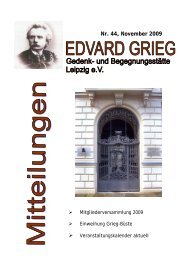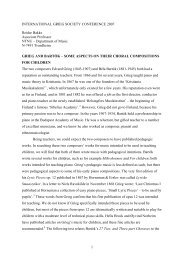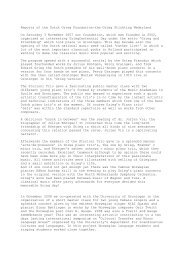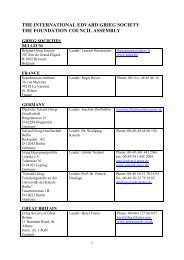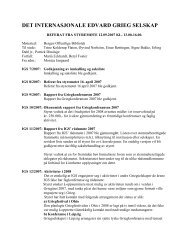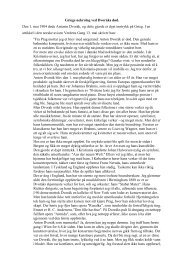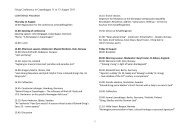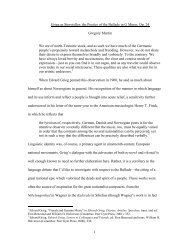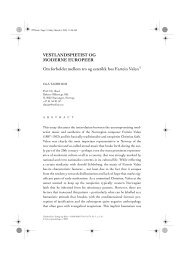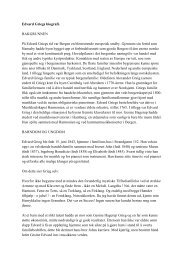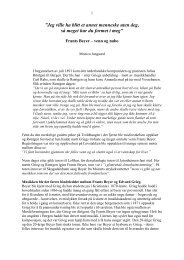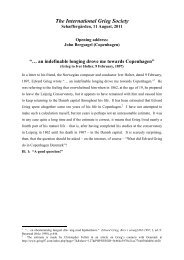Gregory Martin - paper 2009 - Grieg Society
Gregory Martin - paper 2009 - Grieg Society
Gregory Martin - paper 2009 - Grieg Society
Create successful ePaper yourself
Turn your PDF publications into a flip-book with our unique Google optimized e-Paper software.
For the remainder of our discussion on the broad ternary design on display in the concerto, we willconcentrate on the parallels between the first and third movements. While they do not appear to usethe same thematic material (other than the <strong>Grieg</strong> motive in the piano passages noted before), there isan aspect of thematic transformation across them that ties the two movements together: the melodicfragment that closes the first theme – marked by the introduction of the triplet figure into the contextof a thus far purely duple music – evolves via the lyric interlude between the first movement‘s primaryand secondary themes to become the lyrical F major episode of the finale, Ex. 2:When we examine aspects of form, structure, topic, and affect, the similarities between the outermovements become rather uncanny. Both begin with an opening flourish that spans the entirecompass of the piano, and then initiate the movement proper with two theme-groups in the tonic of Aminor. In each movement, the first theme evinces folk-like rhythms in duple meter and is replete withthirds in the melody, while the second primary theme (also folk-like) is of a more scherzando quality,with the primary accent on the off-beat. In both movements, it is this second of the primary themes



